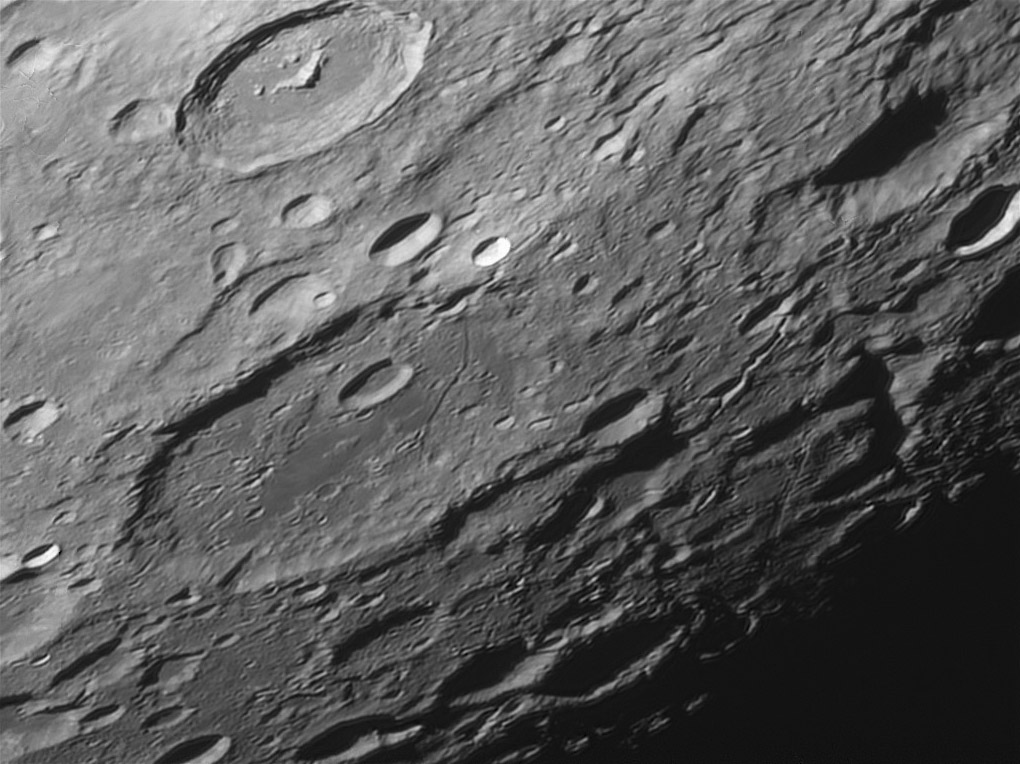Difference between revisions of "October 22, 2013"
| Line 6: | Line 6: | ||
<em>image by [mailto:jordi-ortega@ono.com Jordi Ortega] Barcelona (Catalunya), Spain</em><br /> | <em>image by [mailto:jordi-ortega@ono.com Jordi Ortega] Barcelona (Catalunya), Spain</em><br /> | ||
<br /> | <br /> | ||
| − | Mention of a rille in this region makes observers think of the conspicuous Furnerius Rille that cuts Nectaris ejecta that partially fills the floor of that crater. But there is another named rille in this area. One much harder to see, the subject of one of my earliest observing reports, and well shown in the bottom right of Jordi's image. The [ | + | Mention of a rille in this region makes observers think of the conspicuous Furnerius Rille that cuts Nectaris ejecta that partially fills the floor of that crater. But there is another named rille in this area. One much harder to see, the subject of one of my earliest observing reports, and well shown in the bottom right of Jordi's image. The [https://the-moon.us/wiki/Rimae+Hase Hase Rille] is a parallel-sided shallow trough extends far further than the 257 km [http://planetarynames.wr.usgs.gov/Feature/6898 listed] by the IAU. Towards the limb it jumps sideways (called <em>en echelon</em>) and continues clearly for another [http://bit.ly/1bQYpkQ 45 km], and perhaps all the way to the floor of Marinus. More strangely, at the opposite end it [http://bit.ly/H79JQ5 bends] around and connects with the very unusual bright edged rille on the rim of Petavius. The main part of the rille is radial to the Nectaris Basin and must be related to its formation. The part that bends toward Petavius may be where the basin radial stress field is somehow captured by stress associated with Petavius.<br /> |
<br /> | <br /> | ||
<em>[mailto:tychocrater@yahoo.com Chuck Wood]</em><br /> | <em>[mailto:tychocrater@yahoo.com Chuck Wood]</em><br /> | ||
Revision as of 19:39, 18 August 2018
Little Seen Rille

image by Jordi Ortega Barcelona (Catalunya), Spain
Mention of a rille in this region makes observers think of the conspicuous Furnerius Rille that cuts Nectaris ejecta that partially fills the floor of that crater. But there is another named rille in this area. One much harder to see, the subject of one of my earliest observing reports, and well shown in the bottom right of Jordi's image. The Hase Rille is a parallel-sided shallow trough extends far further than the 257 km listed by the IAU. Towards the limb it jumps sideways (called en echelon) and continues clearly for another 45 km, and perhaps all the way to the floor of Marinus. More strangely, at the opposite end it bends around and connects with the very unusual bright edged rille on the rim of Petavius. The main part of the rille is radial to the Nectaris Basin and must be related to its formation. The part that bends toward Petavius may be where the basin radial stress field is somehow captured by stress associated with Petavius.
Chuck Wood
Technical Details
October 20, 2013. Celestrón 11" + 2.5X Powermate + DMK 31 camera + red filter.
Related Links
21st Century Atlas chart 4.
A high Sun view.
Yesterday's LPOD: Familiar Terrain Seen a Little Differently
Tomorrow's LPOD: Volcanic Drivers
COMMENTS?
Register, Log in, and join in the comments.



